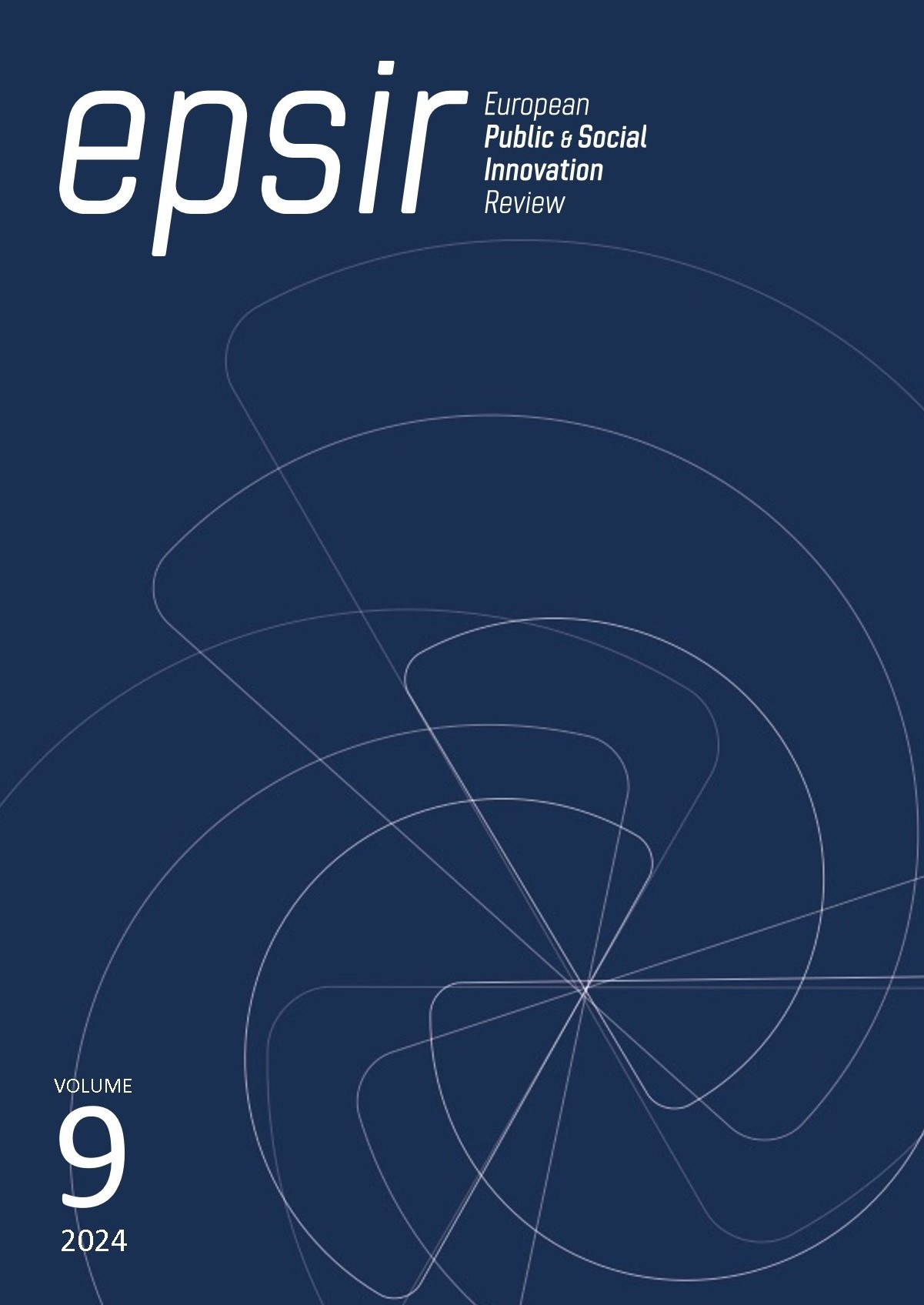Gonzalo Ballester: film strategies for social cinema and intangible heritage in the Region of Murcia
DOI:
https://doi.org/10.31637/epsir-2024-400Keywords:
documentary film, Gonzalo Ballester, immigration, intangible heritage, islamic world, social cinema, traditions, trovoAbstract
Introduction: This work analyzes the filmography of Gonzalo Ballester, focusing on his social aspect and the preservation of intangible heritage. The filmmaker addresses themes such as the traditions of the Region of Murcia and immigration from a personal perspective. Methodology: An analysis was conducted on several of Ballester's films: Mimoune (2006), The Molky way (2009), Al-Madina (2011), Al otro lado del mar (2011), El consejo de hombres buenos. La ley de la huerta (2019), and Karim (2022). Results: The analysis reveals transversal characteristics in his work, highlighting his focus on cultural traditions and social issues. Discussion: Ballester's films reflect his commitment to social and cultural themes, using a personal perspective to address issues such as water management and immigration. Conclusions: Gonzalo Ballester's filmography combines deep social reflection with the preservation of intangible heritage, establishing his work as a significant contribution to documentary cinema.
Downloads
References
Bal, M. (2016). Tiempos trastornados. Análisis, historias y políticas de la mirada. Akal.
Ballester, G. (2020, mayo 26). Gonzalo Ballester (I) [Comunicación personal].
Ballester, G. (2020, junio 4). Gonzalo Ballester (II) [Comunicación personal].
Boletín Oficial de la Región de Murcia no 104. (2009).
Burgos Risco, A. (2015). Ficciones constructoras de realidad. El cine de animación
documental [Tesis doctoral]. Universidad de Murcia.
Cánovas Belchí, J., y Cerón Gómez, J. F. (1990). Murcianos en el cine. Cajamurcia.
Cánovas Belchí, J., y Durante Asensio, I. (2003). Los documentales de la Región de Murcia y las Misiones Pedagógicas. En Val del Omar y las Misiones Pedagógicas: 1931-1936. Publicaciones de la Residencia de Estudiantes.
Cánovas Belchí, J. (2021, diciembre 1). Entrevista a Joaquín Cánovas [Comunicación personal].
Cine de Irán. (2008, octubre 8). Región de Murcia Digital. https://cutt.ly/YyjSLCb
Crespo, A. (1996). Cien años de cine en Murcia. CAM.
Durante Asensio, M. I. (2014). Retóricas de la nostalgia. Imagen, propaganda e identidad. Los reportajes y documentales del NO-DO en la Región de Murcia [Tesis doctoral]. Universidad de Murcia.
Entrevista a Gonzalo Ballester en Onda Regional. (2011, febrero 25). En El escaparate. https://cutt.ly/3yjDfCx
Falleció Karim al incendiarse su chabola en San Javier. (2023, febrero 3). Islan en Murcia. https://cutt.ly/zeoHIlJP
Filmoteca de la Región acogerá las VII Jornadas de Cine y Patrimonio. (2019, febrero 25). El Diario. https://cutt.ly/6yjFhzG
Francés, M. (2012). La producción de documentales en la era digital. Modalidades, historia y multidifusión. Catedra.
Gonzalo Ballester elige Murcia para el preestreno de su nuevo documental "Al otro lado del mar”. (2011, febrero 22). Murcia.com. https://cutt.ly/jyjDaOt
Hernández Navarro, M. Á. (2008). En el umbral del arte global: Metáfora, complejidad y conficto. Imafronte, 19-20, 165-179.
Hernández Navarro, M. Á. (2010). Desincronizados: Tiempos migratorios e imágenes del desplazamiento. Arte y políticas de identidad, 9-24.
Hernández Navarro, M. Á. (2022). Otros tiempos: Estéticas migratorias, videoarte y el laboratorio de una novela. En B. Brémard y A. Palau (Eds.), Empreintes d’ailleurs dans le monde hispanique contemporain (pp. 283-303). Hispanística XX.
“Karim”, de Gonzalo Ballester, seleccionado dentro del programa “Reactivos culturales”. (2020, junio 18). En Noche abierta. https://cutt.ly/SeoKWIyi
Martínez Martínez, F. (2003). Documentaria cinematográfica y región murciana. Fundación Instituto de la Comunicación.
Morón Monge, M. del C., y Morón Monge, H. (2017). La Evolución del Concepto de Patrimonio: Oportunidades para la Enseñanza de las Ciencias. Didáctica de las ciencias experimentales y sociales, 33, 83-98. DOI: https://doi.org/10.7203/dces.33.10814
Parra, A. (2022, julio 11). Karim. La Verdad. https://cutt.ly/LeoHTRHe
Pistas metodológicas para la sensibilización intercultural. (2006). Subdirección General de Información.
Preestreno del documental "Al otro lado del mar”. (2011, febrero 25). La Verdad. https://cutt.ly/gyjDu7d
Reyes, K. (2020). Karim [Oculto.TV]. https://cutt.ly/CeoHArpG
Ritos y tradiciones. (2020, enero 7). En MURyCÍA (Onda Regional). https://cutt.ly/lyjFyXq
Rosillo Rubio, L. (2014). Evolución del patrimonio de la región de Murcia a través de la pantalla: Los documentales de Val del Omar para las Misiones Pedagógicas. En M. Pérez Sánchez y M. del M. Albero Muñoz (Eds.), Territorio de la memoria: Arte y patrimonio en el sureste español. Fundación Universitaria Española.
Sáez, M. (2011, febrero 2). Aunque las cosas han cambiado en Irán los cineastas siguen su camino. La Razón. https://cutt.ly/QyklCRB
Sánchez Bernal, F. J. (2022). El documental de arte en la obra de Gonzalo Ballester: Ramón Gaya y Pedro Serna. En J. J. Aliaga Cárceles y J. Cánovas Belchí (Eds.), El documental de arte en España (pp. 199-213). Akal.
Sánchez Bernal, F. J. (2023). La producción audiovisual de la Fundación Integra digital: El patrimonio de la Región de Murcia en la pantalla. En J. Cánovas Belchí y J. J. Aliaga Cárceles (Eds.), Arte y patrimonio en el audiovisual (pp. 269-285). Sílex.
The city. (s. f.). idfa Institute. https://cutt.ly/heikqoc6
Downloads
Published
How to Cite
Issue
Section
License
Copyright (c) 2024 Francisco José Sánchez Bernal

This work is licensed under a Creative Commons Attribution-NonCommercial-NoDerivatives 4.0 International License.
Authors who publish with this journal agree to the following terms:- Authors retain copyright and grant the journal right of first publication with the work simultaneously licensed under Creative Commons Non Commercial, No Derivatives Attribution 4.0. International (CC BY-NC-ND 4.0.), that allows others to share the work with an acknowledgement of the work's authorship and initial publication in this journal.
- Authors are able to enter into separate, additional contractual arrangements for the non-exclusive distribution of the journal's published version of the work (e.g., post it to an institutional repository or publish it in a book), with an acknowledgement of its initial publication in this journal.
- Authors are permitted and encouraged to post their work online (e.g., in institutional repositories or on their website) prior to and during the submission process, as it can lead to productive exchanges, as well as earlier and greater citation of published work (See The Effect of Open Access).
Funding data
-
Ministerio de Universidades
Grant numbers PID2022-138643NB-I00;FPU19/03451




